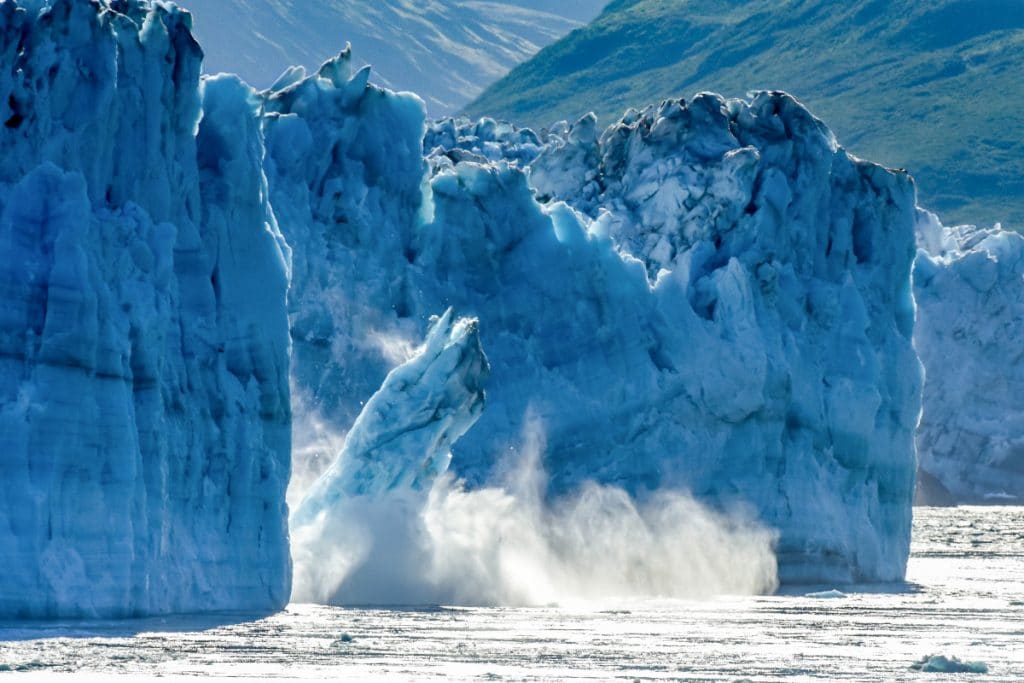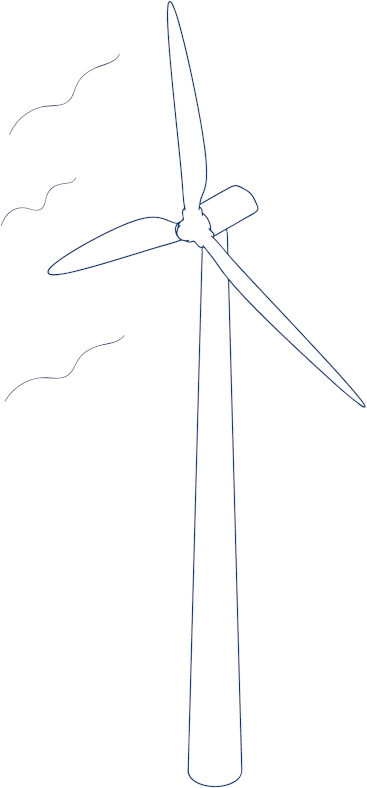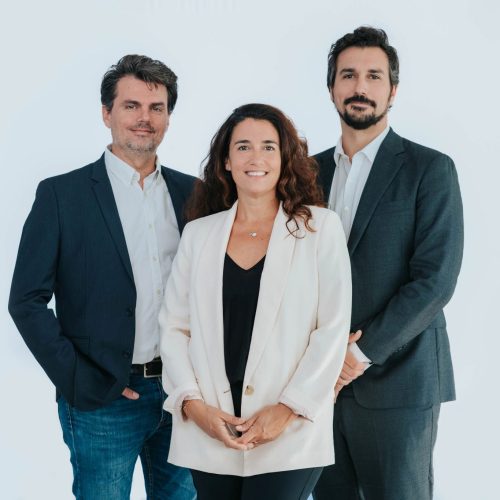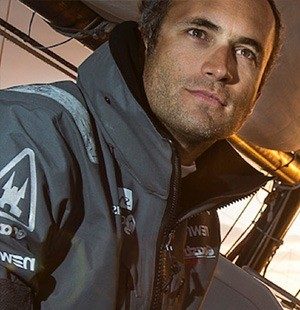Nuclear power: a future to be built on an international scale
Is nuclear power one of the keys to a more temperate world?
One thing is certain: it features prominently in most of the scenarios developed by the IPCC (Intergovernmental Panel on Climate Change) and theIEA (International Energy Agency) to combat climate change.
Its carbon performance is recognized as a major asset, as is its complementarity with renewable energies. Of course, increasing nuclear power's share of the global energy mix depends on strong political action. But industry also has a major role to play in boosting research and development efforts, and maintaining the capital of skills.
With forty years' experience and recognized skills, Onet Technologies is fully committed to the nuclear industry.
- - Onet
The climate emergency is a fact

Nations are falling far short of the action needed to combat global warming.
The judgement is without appeal, its wording scathing. On this day in February 2021, António Guterres, Secretary-General of the United Nations, announces the publication of the interim report of the UNFCCC (United Nations Framework Convention on Climate Change).
The science is clear," he explains. To limit the global temperature rise to 1.5°C, we need to reduce global emissions by 45% by 2030, compared with 2010 levels.
António Guterres, Secretary-General of the United Nations
The course set for the international community is an ambitious one!
But the underlying observation is nothing new. It has been known for many years that CO2 (carbon dioxide) concentrates in the atmosphere as it is emitted in increasing quantities. As a greenhouse gas, this leads to rising temperatures.
The latest statements by Fatih Birol, Director of the IEA (International Energy Agency), give no cause for optimism: after a decrease in 2020, global CO2 emissions are set to rebound in 2021, as they will the following year, to reach an all-time high in 2023. According to some simulations, the evolution expected in a century could be comparable to what happened in the space of 10,000 years when the Earth emerged from the last ice age.
A pace that many eco-systems will not be able to adapt to...
The climate emergency is therefore a reality. One of the ways to respond to this is to act on electricity generation. The latter is responsible for over a third of CO2 emissions worldwide. The independent think-tank Ember has shown that emissions from the power sector fell by 2% in 2019. This was largely due to the decline in coal production - estimated at -3% by the data analysis organization Carbon Brief.
Make up for the intermittency
of renewable energies

Can renewable electricity generation replace fossil fuels (coal and, to a lesser extent, natural gas) today?
In 2019, solar and wind power generated 270 terawatt-hours: 8% of the global total, compared with just 3% in 2013. Their share even reached 18% in the European Union.
According to IPCC and IEA scenarios, wind and solar power production must continue to grow by 15% per year to meet climate targets. This target will be met in 2019, but will be jeopardized in the long term by the problem of intermittency. In other words, the inability of wind turbines and solar panels to produce electricity continuously on demand.
One solution to this problem would be to deploy large-scale electricity storage capacities to meet demand when the wind isn't blowing and the sun isn't shining. However, the technical and economic conditions are not ripe for such a prospect in the short term. Hydrogen, for example, is making progress and can be used to store electricity in experimental programs, but its production by electrolysis from renewable electricity remains very expensive.
As a result, wind and solar power can't do without a supplementary source of controllable, low-carbon energy.
Nuclear reactors combine these two characteristics. They are able to carry out their mission regardless of weather conditions, season or time of day. A decisive factor in securing consumer supplies and stabilizing power grids.
Carbon performance and nuclear safety
Another decisive advantage is that fission of the uranium atom does not emit CO2.
Of course, building and dismantling a power plant, extracting ore and managing radioactive waste are all activities that have a carbon impact.
In its 2014 "carbon base" report, ADEME (the French Agency for Ecological Transition) takes them into account. It estimates the median emission level of a nuclear kilowatt-hour at 66 grams.
A common order of magnitude with
- photovoltaic solar energy (from 41 to 48 grams),
- hydroelectricity (24 grams),
- wind power (11 to 12 grams).
And, above all, a far superior performance:
- coal (820 grams)
- and gas (490 grams).
This explains why France, with its fifty-six nuclear reactors supplying 70% of its electricity, is one of the best performers in the fight against climate change.
There remains the question of the safety of nuclear power generation, which is a source of concern for some members of the public.
In a report issued at the end of March 2021, the experts at the JRC (Joint Research Centre - the European Union's scientific service) consider that "no analysis provides scientific evidence that nuclear energy harms human health or the environment more than other energies."
As far as non-radiological effects are concerned, "the impacts of nuclear power are essentially comparable to those of hydroelectric and renewable energies", they add.
As for radioactive effects, "measures preventing harmful impacts or limiting their consequences can be established, with current technologies, at reasonable cost."
Deep geological disposal, the most widely accepted option for spent nuclear fuel and high-level radioactive waste, is seen by the report's authors as an "appropriate and safe means".
Lastly, while serious nuclear accidents cannot be 100% ruled out, they present "an extremely low probability".

A fleet that supplies
10% of electricity consumption
With all its advantages, is the atom an indispensable tool for the energy transition?
The answer would be an unqualified "yes" were it not for a problem of scale. In fact, the 442 nuclear reactors in operation in some thirty countries supply only around 10% of the world's electricity consumption.
And only around fifty new units are currently under construction worldwide, which will not fundamentally change the situation...
With global demand for electricity set to double by 2050, the IEA recommends an 80% increase in nuclear power generation over the next twenty years - while investing massively in the development of renewable energies.
In 2019, the IPCC studied a multitude of scenarios on the possibility of limiting global warming to 1.5°C. In most cases, a substantial increase in the use of nuclear power is envisaged, with a multiplication of its share in primary energy consumption ranging from two to six between 2010 and 2050.
But how can we do this, given that nuclear costs are tending to rise as a result of tighter safety measures and the deployment of new technologies such as the EPR (pressurized water reactor).
A decisive step would be to include nuclear power in the European taxonomy on green finance, i.e. the list of energy supply activities eligible for public funding for their contribution to carbon neutrality.
This text will have a decisive influence on public and private investment decisions in the years to come. In particular, it could help finance new power plants. But the European Commission's decision, expected in April 2021, has been postponed.

Consolidating what's been achieved without forgetting to innovate
Another option is to extend the lifespan of existing power plants. In the United States, home to the world's largest nuclear fleet, some 90 reactors have 60-year operating licenses - for an average age of 39 years per reactor in service. One of the IEA's recommendations is to authorize life extensions for existing plants "for as long as possible" in terms of plant safety.
The future of nuclear power also depends on stepping up our efforts to innovate and develop the technologies of the future. Nuclear fusion, through the ITER international experimental project, is undoubtedly the most widely publicized. It holds out the promise of a clean, safe and unlimited source of low-carbon energy.
But the design of SMR reactors (modular medium-power units) also offers promising prospects. In particular, they could be used to support renewable energies.
In an industry where engineering capacity, operational excellence and safety culture are essential to project success, maintaining human capital is a major challenge. This is particularly true in France, where nuclear expertise has always been a highly prized export product!
When a sense of service
combines with technical expertise

Onet Technologies' added value also includes
- a sense of service and commitment that fosters long-term, trust-based relationships with nuclear industry customers;
- a maturity in the business that nurtures proactivity and anticipation of needs ;
- the ability to deploy customized expertise internationally.
All these strengths are combined to serve the company's three strategic businesses: engineering and services for reactor maintenance and modification, dismantling and waste management, and operator services.

Development Director, Onet Technologies
The first activity makes us a major partner in the life extension of EDF's nuclear power plants. Our teams excel in specialized maintenance. As part of the stimulus plan, three of our projects have won awards, helping to boost our performance in the field!
Expected advances include the deployment of laser technology for metal decontamination and a real-time weld quality control system.
When it comes to waste management, Onet Technologies operates its own ICPE (installation classée pour la protection de l'environnement), SOGEVAL, which enables it to provide treatment and storage services that are almost unrivalled in France. The company is also working on the development of robotized solutions.
Finally, in the field of operator services, our nuclear logistics services enable other maintenance personnel to devote maximum time to their core competencies. This is a key function in ensuring that maintenance shutdowns take place on schedule and with the industrial quality expected.
A driving force for the French industry
Like the rest of the French nuclear industry, Onet Technologies has made export development one of its top priorities. A number of contracts are currently underway in Belgium, Italy and the United Kingdom for waste management and dismantling. An office was opened in Tokyo in December 2020.
In India, the project to build 6 EPRs at Jaïtapur has reached a decisive milestone, with EDF due to submit a binding offer in April 2021. Onet is there to support the project.

As for the American subsidiary EPM (Engineering Planning and Management, Inc.), specialized in fire safety and protection, it could one day open the doors of the Canadian market to the Group.
In this country, SMR reactors, the emerging market for dismantling and waste management, and the implementation of an ambitious program to upgrade the fleet of reactors in operation are the main potential outlets.
The other current topic is an audit leading to ISO 19443 certification: "This is an international standard dedicated to the nuclear sector. Its aim is to reinforce the consideration of safety issues and the control of industrial quality to meet them," explains Maxime Michel-Noël. We hope to be one of the companies certified this year, and thus be able to play a leading role, since the standard will be imposed on the entire industry in the years to come.
Onet Technologies attaches great importance to its role as a facilitator and growth facilitator for the nuclear community. This is demonstrated, for example, by its contribution to the governance and work of GIFEN (the French nuclear energy industry association).
Whether it's a question of advancing key skills, promoting new standards of high industrial quality or accelerating the digitization of practices, our success will be collective and will require the mobilization of all our vital forces!





